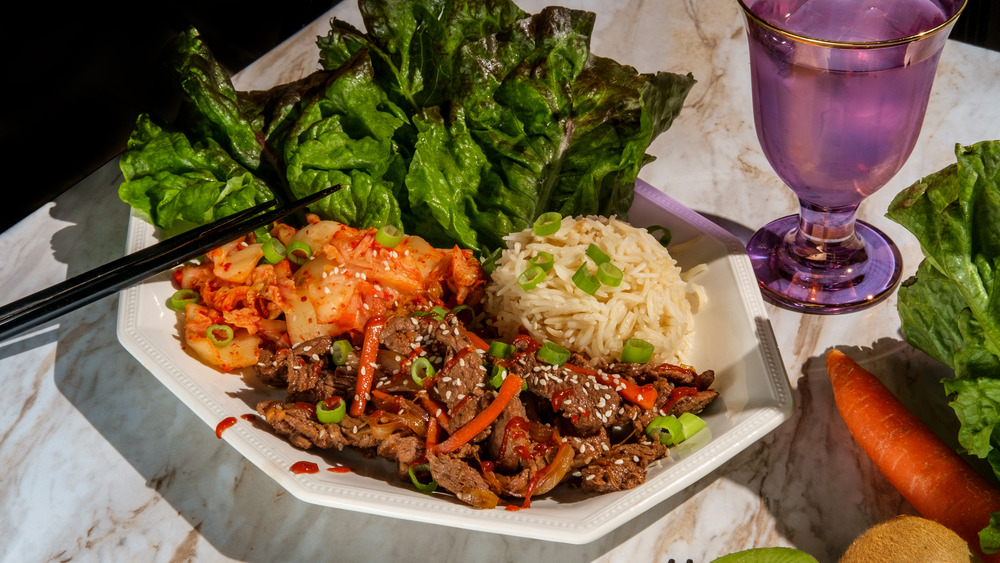What Is Gochujang And What Does It Taste Like?
Shake Shack had the best of intentions when it unveiled its Korean-style Fried Chick'n sandwich and gojuchang chicken nuggets in January of this year. The deal was part of a 2021 limited-time-offer campaign that will see the chain presenting Korean-themed items through early April (via Insider). And while first few items didn't exactly get rave reviews from foodies at sites like Eater, some good things happened — as New York Korean chef Hooni Kim put it to Insider, "I believe that incorporating Korean ingredients or dishes into America's mainstream is generally a positive thing." And by "ingredients" he likely meant gochujang, the Korean sauce that could well give sriracha a run for its money.
Gochujang is a combination of two words: gochu, which means chili in Korean, and jang, which is fermented paste or sauce (via BBC). Stratford University identifies gochujang as one of fiery Korean cuisine's "mother sauces." (There are three, but gochujang is the only one that packs a spicy punch.) As you might expect from a cuisine that derives much of its identity from heat, gochujang is a spicy paste made from fermented soybeans, glutinous rice, and red peppers (via The Kitchn). Depending on the kind of gochujang you get, the sauce can either be both sweet and spicy, or just darned hot. Some containers of gojuchang you buy will have heat indicators, making it easy to tell exactly how hot its contents is.
Gochujang is a versatile sauce
If curiosity got the better of you and you chose to pick up a flaming red tub of gochujang, know that you can use the sauce in the same way that you might use Japanese miso paste. The sauce can add both heat and flavor to marinades for meats that eventually end up on a grill or barbecue, and it can be stirred into the ubiquitous Korean bulgogi — the barbecue dish that My Korean Kitchen translates as "fire meat." Gochujang can also be used to flavor up hearty soups and stews, and it can add umami to dipping sauces.
Today says that the Shake Shack iteration of gochujang was the result of a collaborative partnership with its Korean culinary partners "to develop a version that remained true."
Before you call out Shake Shack for messing with the original, know that households used to have their own unique versions of gochujang, from family recipes prepared by grandmas or great-grandmas. In Korea, the fight is on to keep the art of making gochujang at home from dying on the altar of modernity (via BBC). But even as they want to keep the old ways alive, traditional gochujang makers like Jeong-seon Bu don't seem fussed about seeing gochujang served up in 21st century squeeze bottles, and as part of a sriracha mayo, fusion-style combo. As she told the BBC, "It's a good opportunity to create new food culture."

